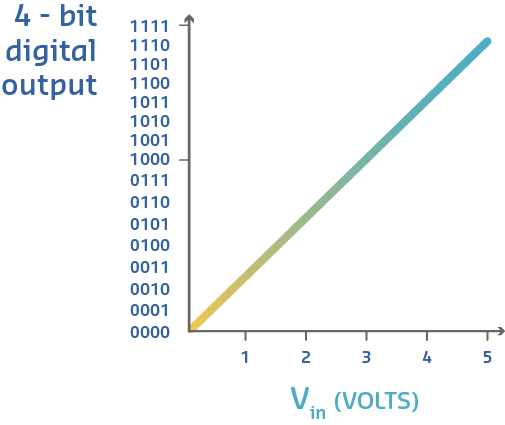Nyquist Theorem
- Nyquist theorem states that in order to be able to reproduce an analogue signal, the sampling rate needs to be at least two times faster than the signal’s highest freqency component.
- The following formula provides the digital output(Out) for any given input voltage(Vin) in our 4-bit ADC example.

- The following graph shows the lineal relationship between the input voltage and the digital output.
- Note that for the digital number to accurately represent the temperature in the room, the relation between temperature and resistance must be a straight line.

- In our example we used 4 bits for simplicity. however real ADCs use 10 to 20 bits; hence the steps between digital values represent very small variations in the analogue input.
- Once analogue values are converted to digital numbers. computers can then process them and make decisions based on the results. That will be the subject of a future module.
- To convert digital numbers back to analogue signals we use a DAC. The following figure shows the generic connection of a DAC.

- The formula to determine the analogue value in the output is:

- Note that Vout can only take 16 possible values; hence this output is no longer analogue in the strict sense. The error induced by the rounding-off that takes place during the digital to analogue conversion is known as quantization error. To minimise quantization errors we can either increase the number of bits of the converter, or increase the sampling frequency, or both.
- Values in the output of a DAC are updated at a fixed rate similar to the sampling rate used in ADCs. A whole field called Digital Signal Processing studies algorithms that can be applied to digitised signals.

